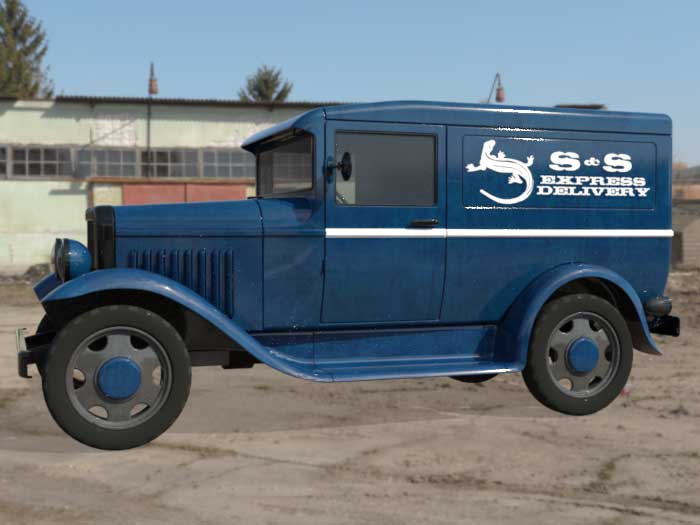How the van has evolved
This article aims to walk you through a brief history of this evolution, helping you appreciate the rich heritage that shapes the vans on our roads today.
The Early Beginnings (1890s-1930s)
The history of vans in the UK dates back to the late 19th century, coinciding with the advent of the motor car. Early commercial vehicles were essentially motorised versions of horse-drawn wagons. They were boxy, utilitarian, and powered by rudimentary internal combustion engines.
A notable model from this era is the Thornycroft J-type van, first produced in 1913. It was a workhorse, used extensively during World War I for transporting goods and troops. it's design, however, was rudimentary, with a separate cabin and cargo area and a top speed of around 20 mph.
Post-War Developments (1940s-1960s)
After World War II, there was a boom in the demand for commercial vehicles as industries grew and businesses expanded. Manufacturers began to introduce more comfortable and capable vans.
One of the most iconic vans of this era is the Morris J-type, introduced in 1948. it's forward-control design, where the driver sat above the front axle, allowed for a larger cargo area. It was one of the first vans to offer car-like features, such as a comfortable cabin and good visibility.
The 1960s saw the introduction of the Ford Transit. it's design was revolutionary - it combined the load-carrying ability of larger trucks with the agility and comfort of a passenger car. It's success set a new standard for van designs, leading to the modern van's shape and layout.
The Modern Era (1970s-Present)
The 1970s and 80s saw a shift towards more efficient and aerodynamic designs. The Leyland Sherpa and Bedford CF, for instance, featured curved lines and wind-cheating shapes. Inside, there were improvements in ergonomics and comfort, with better seats, improved heating and ventilation, and more car-like interiors.
The 1990s brought the advent of high-roofed vans, such as the Mercedes-Benz Sprinter and Fiat Ducato, offering more load volume without increasing the footprint. The concept of different body lengths and heights became more prevalent, allowing businesses to choose a van that precisely met their needs.
In the 2000s, we saw the introduction of more advanced technology. Features such as ABS brakes, electronic stability control, and efficient diesel engines became standard. The Vauxhall Vivaro and Volkswagen Transporter T5 are prime examples of this era's advances.
Today, vans are more versatile, efficient, and sophisticated than ever. They come with a plethora of safety and connectivity features, such as autonomous emergency braking, lane-keeping assist, and infotainment systems with smartphone connectivity. Vans like the Ford Transit Custom and Peugeot Expert are as comfortable and well-equipped as many cars.

The Rise of Electric Vans
The most significant development in recent years is the emergence of electric vans. With growing environmental concerns and stringent emissions regulations, manufacturers are investing heavily in electric vehicle technology.
Models like the Nissan e-NV200 and Renault Kangoo Z.E. offer zero tailpipe emissions and lower running costs, though with range limitations. However, as battery technology improves and charging infrastructure expands, we can expect these limitations to diminish.
The Mercedes-Benz eSprinter and Volkswagen ABT e-Transporter are recent additions to the electric van market. They aim to offer the same utility as their diesel counterparts but with the benefits of electric propulsion. Additionally, the upcoming Ford E-Transit promises to bring electric power to one of the UK's most popular vans.
The Future of UK Van Designs
The future of van design in the UK is set to evolve even further, with sustainability, technology, and versatility leading the charge. Autonomous driving technology, already present in some form in several current models, will likely become more prevalent. This could revolutionize delivery services and other commercial uses for vans, improving safety and efficiency.
Hybrid technology is another area of focus. Models like the Ford Transit Custom PHEV (Plug-in Hybrid Electric Vehicle) offer the benefits of electric power for short trips and a petrol engine for longer journeys, providing flexibility whilst reducing emissions.
Moreover, the trend of converting vans into mobile homes or 'camper vans' is set to influence van designs further. Manufacturers are recognising this trend and are producing models tailored for this purpose. The Volkswagen California, based on the Transporter, and the Mercedes-Benz Marco Polo, based on the V-Class, are factory-made camper vans that offer home comforts on wheels.
In Conclusion
The evolution of UK van designs has been a journey of innovation and adaptation to changing needs. From the basic utility vehicles of the early 20th century to the high-tech, versatile machines of today, vans have come a long way. As we look to the future, with advances in technology and a shift towards sustainability, it's clear that the evolution of UK van designs is far from over.

